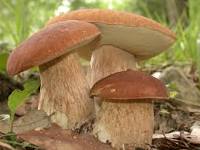Stamp: Sir Alexander Fleming - Laccaria amethystina (Central African Republic 2023)
Sir Alexander Fleming - Laccaria amethystina (Central African Republic 2023)
20 June (Central African Republic ) within release Discovery of Penicillin (2023) goes into circulation Stamp Sir Alexander Fleming - Laccaria amethystina face value 1,200 Central African CFA franc
| Stamp Sir Alexander Fleming - Laccaria amethystina in catalogues | |
|---|---|
| Yvert et Tellier: | Yt: CF 10724 |
Stamp is square format.
Also in the issue Discovery of Penicillin (2023):
- Mini Sheet - 95th Anniversary of the Discovery of Penicillin face value 3*1200;
- Stamp - Chemical structure of penicillin, Penicillium rubens in a Pe face value 1,200;
- Stamp - Sir Alexander Fleming - Laccaria amethystina face value 1,200;
- Stamp - Sir Alexander Fleming - St. Mary's Hospital, London face value 1,200;
Stamp Sir Alexander Fleming - Laccaria amethystina it reflects the thematic directions:
An anniversary is the date on which an event took place or an institution was founded in a previous year, and may also refer to the commemoration or celebration of that event. For example, the first event is the initial occurrence or, if planned, the inaugural of the event. One year later would be the first anniversary of that event. The word was first used for Catholic feasts to commemorate saints. Most countries celebrate national anniversaries, typically called national days. These could be the date of independence of the nation or the adoption of a new constitution or form of government. The important dates in a sitting monarch's reign may also be commemorated, an event often referred to as a "Jubilee".
A medication (also called medicament, medicine, pharmaceutical drug, medicinal drug or simply drug) is a drug used to diagnose, cure, treat, or prevent disease. Drug therapy (pharmacotherapy) is an important part of the medical field and relies on the science of pharmacology for continual advancement and on pharmacy for appropriate management.
A mushroom (or toadstool) is the fleshy, spore-bearing fruiting body of a fungus, typically produced above ground on soil or on its food source. The standard for the name "mushroom" is the cultivated white button mushroom, Agaricus bisporus; hence the word "mushroom" is most often applied to those fungi (Basidiomycota, Agaricomycetes) that have a stem (stipe), a cap (pileus), and gills (lamellae, sing. lamella) on the underside of the cap. These gills produce microscopic spores that help the fungus spread across the ground or its occupant surface. "Mushroom" describes a variety of gilled fungi, with or without stems, and the term is used even more generally, to describe both the fleshy fruiting bodies of some Ascomycota and the woody or leathery fruiting bodies of some Basidiomycota, depending upon the context of the word. Forms deviating from the standard morphology usually have more specific names, such as "bolete", "puffball", "stinkhorn", and "morel", and gilled mushrooms themselves are often called "agarics" in reference to their similarity to Agaricus or their order Agaricales. By extension, the term "mushroom" can also designate the entire fungus when in culture; the thallus (called a mycelium) of species forming the fruiting bodies called mushrooms; or the species itself.



